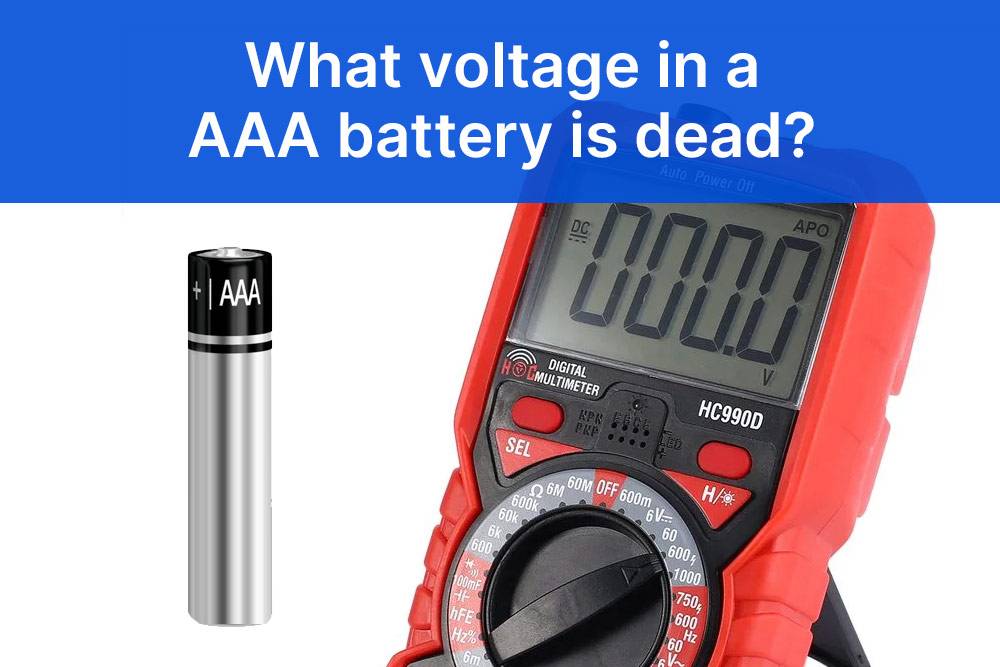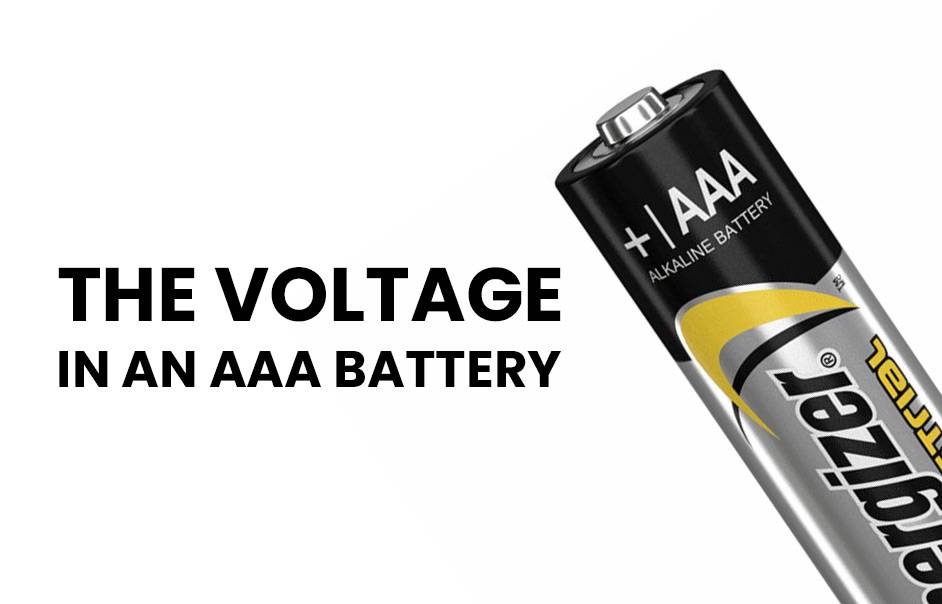An AAA battery typically holds a voltage of around 1.5 volts. This voltage facilitates the power delivery necessary for low-drain devices like remote controls and flashlights. Over time, battery voltage may diminish due to chemical depletion. Despite variations influenced by temperature and load, the 1.5-volt AAA battery remains a popular choice for various everyday gadgets.
What is a voltage and why does it matter?
Voltage, measured in volts (V), signifies the electrical force driving charged electrons through a circuit. It determines a device’s functionality and can impact its operation. Insufficient voltage may hinder device performance, while excessive voltage can cause damage. Understanding voltage ensures optimal device function and safeguards against potential harm, highlighting its crucial role in electronics.
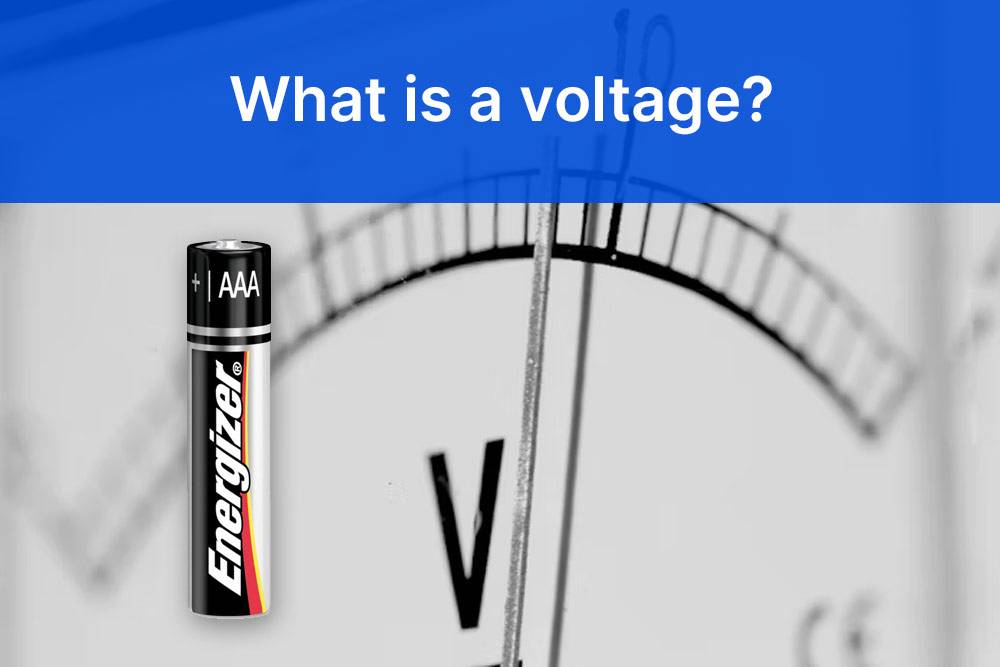
Why Voltage Matters:
- Device Functionality: Different devices demand specific voltage levels for optimal operation.
- Impact on Devices: Too low a voltage may hinder device function, while excess voltage can lead to potential damage.
When it comes to batteries like AAA batteries, understanding their voltage output is crucial. Matching the correct voltage with your device’s requirements ensures peak performance and safeguards against potential damage. Voltage is the silent force that keeps our electronic world running smoothly!
Understanding AAA batteries
AAA batteries, measuring approximately 44mm long and 10mm in diameter, provide 1.5 volts of power. They suit various devices like remote controls and clocks. Lifespan varies based on usage and storage conditions. Tips for extending life include removing batteries from idle devices and opting for rechargeables. Understanding these basics aids in selecting the right power source for optimal device performance.
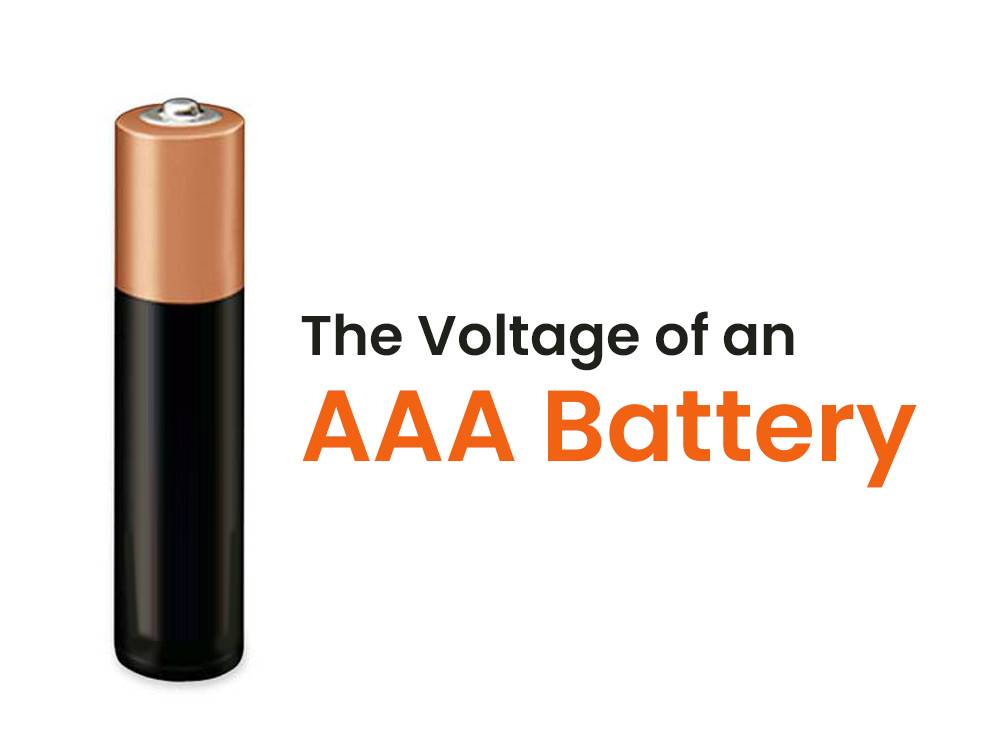
Exploring AAA Battery Basics:
- Size Matters: “AAA” denotes the battery’s size—approximately 44mm long and 10mm in diameter. Smaller than AAs but larger than button cells, they fit a diverse range of devices.
- Voltage Insights: AAA batteries boast 1.5 volts, ample for low-drain devices like clocks. High-drain devices, such as cameras, might require multiple AAAs or a higher voltage alternative.
- Lifespan Dynamics: Factors like usage frequency, temperature, and battery quality influence an AAA battery’s lifespan. Alkaline AAA batteries generally last from months to several years, depending on use.
Tips for Extending AAA Battery Life:
- Remove from Idle Devices: Take out batteries from unused devices.
- Optimal Storage: Store AAA batteries in a cool, dry place.
- Consider Rechargeables: If suitable, choose rechargeable AAA batteries.
- Avoid Mixing: Refrain from combining new and old batteries.
Understanding these AAA battery fundamentals empowers you to make informed decisions when selecting replacements. Armed with this knowledge, ensure your devices receive the right power for optimal performance!
The voltage of an AAA battery
The 1.5-volt rating of AAA batteries is vital for consistent performance in devices like remote controls and flashlights. To maintain stable voltage, store batteries properly, avoid mixing old and new ones, and consider rechargeable options. By following these practices, users can optimize battery lifespan and ensure reliable device operation.
Key Points:
- Constant Voltage for Optimal Function: AAA batteries maintain a steady voltage until depletion, ensuring devices operate without disruptions.
- Choosing Quality Batteries: Check expiration dates and opt for reputable brands to maximize voltage output and longevity.
- Impact of External Factors: Extreme temperatures or heavy device usage may temporarily affect voltage, but proper storage and usage practices help mitigate these issues.
Tips for Prolonging AAA Battery Life:
- Store batteries in a cool, dry place.
- Remove batteries from unused devices.
- Avoid mixing old and new batteries.
- Consider using rechargeable AAA batteries.
- Minimize unnecessary device usage or standby time.
By adopting these practices, you not only extend the overall lifespan of AAA batteries but also maintain their stable voltages, ensuring reliable performance in your devices. Next time you grab those AAAs, remember their crucial role in keeping your gadgets running smoothly!
How long does an AAA battery last?
The lifespan of AAA batteries varies based on device type, battery quality, and usage frequency. Low-power devices like remote controls may last several months to a year, while high-drain devices like cameras drain them faster, lasting only hours or days. Rechargeable batteries have shorter lifespans but offer reusability benefits. Implementing smart usage practices can extend their life.
- Device Impact: For low-power devices (remote controls, wall clocks), AAA batteries may last several months to a year. High-drain devices (cameras, gaming consoles) drain them faster, lasting only hours or days.
- Battery Quality: Rechargeable batteries have shorter lifespans than non-rechargeable ones, but they offer reusability benefits.
- Usage Frequency: Constant use shortens lifespan. Turning off devices when not in use and removing batteries during extended non-use periods can help prolong lifespan.
While there’s no definitive answer, understanding these factors and implementing smart usage practices can extend the life of your AAA batteries.
Factors that affect the voltage of an AAA battery
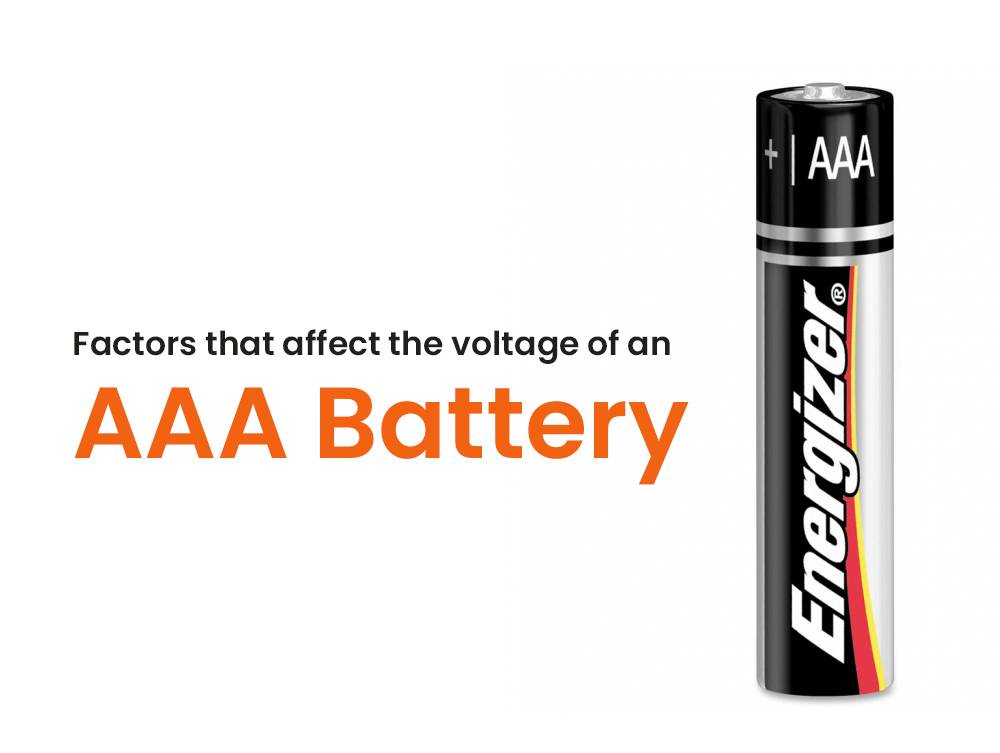
Understanding AAA battery voltage factors is crucial for optimal performance. Influencing elements include temperature impact, storage conditions, device power consumption, battery quality, and usage habits. Extreme temperatures, moisture exposure, and high-energy device usage can diminish voltage levels over time. Managing these factors ensures prolonged battery lifespan and stable device performance.
- Temperature Impact: Extreme heat accelerates chemical reactions, draining power faster, while cold temperatures reduce voltage output.
- Storage Conditions: Humid environments and moisture exposure lead to corrosion, affecting performance and diminishing voltage.
- Device Power Consumption: High-energy devices deplete batteries faster, resulting in lower voltages compared to low-power devices.
- Battery Quality: Cheaper or low-quality batteries may offer inconsistent power output, causing voltage fluctuations.
- Usage Habits: Frequent charging/discharging without complete cycles can reduce capacity and diminish voltage levels over time.
Understanding and managing these factors will help optimize AAA battery lifespan and maintain stable device performance.
Tips for prolonging the lifespan of your AAA batteries
Prolong the life of AAA batteries with these tips: Opt for rechargeable batteries for long-term savings and environmental benefits. Store them in a cool, dry place and remove from unused devices. Avoid mixing old and new batteries, and turn off devices when not in use. Reduce power consumption and keep contact points clean for optimal performance.
- Choose Rechargeable Batteries: Invest in rechargeable AAA batteries for long-term cost savings and reduced environmental impact.
- Proper Storage: Store AAA batteries in a cool, dry place away from sunlight to maintain performance and prevent leakage.
- Remove Batteries from Unused Devices: Prevent slow drainage by removing AAA batteries from devices not in use for an extended period.
- Avoid Mixing Old and New Batteries: Replace all AAA batteries simultaneously to ensure even power distribution and optimal efficiency.
- Turn Off Devices: Conserve battery life by turning off electronic devices when not in use.
- Reduce Power Consumption: Adjust device settings to minimize power usage, extending the life of your AAA batteries.
- Keep Contacts Clean: Regularly check and clean contact points on both the device and batteries to ensure proper electrical conductivity.
By following these simple steps, you’ll save money and contribute to environmental sustainability by reducing battery waste.
How do you make a 12-volt battery out of AA batteries?
To create a 12-volt battery using AA batteries, connect eight AA cells in series. Each AA battery yields 1.5 volts, totaling 12 volts when linked in a series circuit. Ensure all batteries are of the same electrochemistry system and size. Connect positive to negative terminals to maintain polarity. This arrangement forms a 12-volt battery from AA cells.
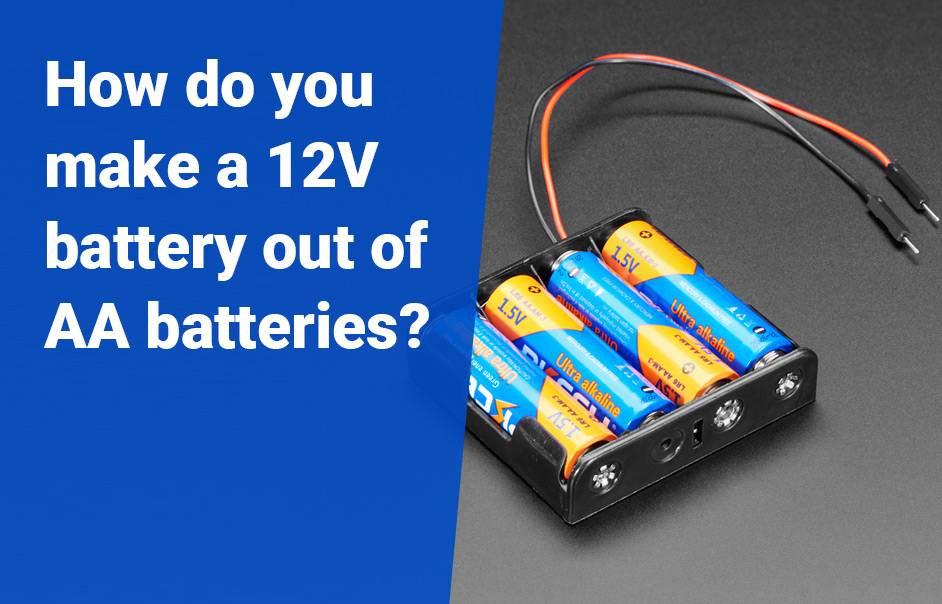
Why do AA and AAA batteries have the same voltage? Which is better?
AA and AAA batteries share the same voltage despite their size difference. Both types contain identical materials, ensuring equivalent voltage output. However, AA batteries, with their larger size, boast higher capacity and discharge currents, making them preferable for power-demanding applications. Size discrepancy affects capacity and discharge capabilities, not voltage.
What voltage in a AAA battery is dead?
A AAA battery is considered dead when its voltage drops below 1.0 volts. As the battery depletes, its voltage gradually decreases. When it reaches around 1.0 volts or lower, the battery can no longer provide sufficient power for most devices, indicating that it is dead or depleted.
Why are they called AAA batteries?
AAA batteries are named based on their size classification rather than specific words or initials. Similar to AA batteries, “AAA” serves as a designation for a particular battery size, indicating its smaller form factor compared to AA batteries. This naming convention helps differentiate batteries of varying sizes in the market.
Conclusion
Understanding AAA battery voltage is crucial for device performance. Typically rated at 1.5 volts, AAA batteries suit low-drain devices like remotes. Lifespan varies based on usage, and factors like internal resistance, temperature, and storage impact voltage over time. Prolong battery life by proper storage, prompt removal of depleted batteries, and using energy-efficient devices. With this knowledge, optimize AAA battery use, ensuring longevity and minimizing waste for your electronic gadgets.
FAQs
Are AAA batteries 1.5V?
Yes, standard AAA batteries typically have a nominal voltage of 1.5 volts.
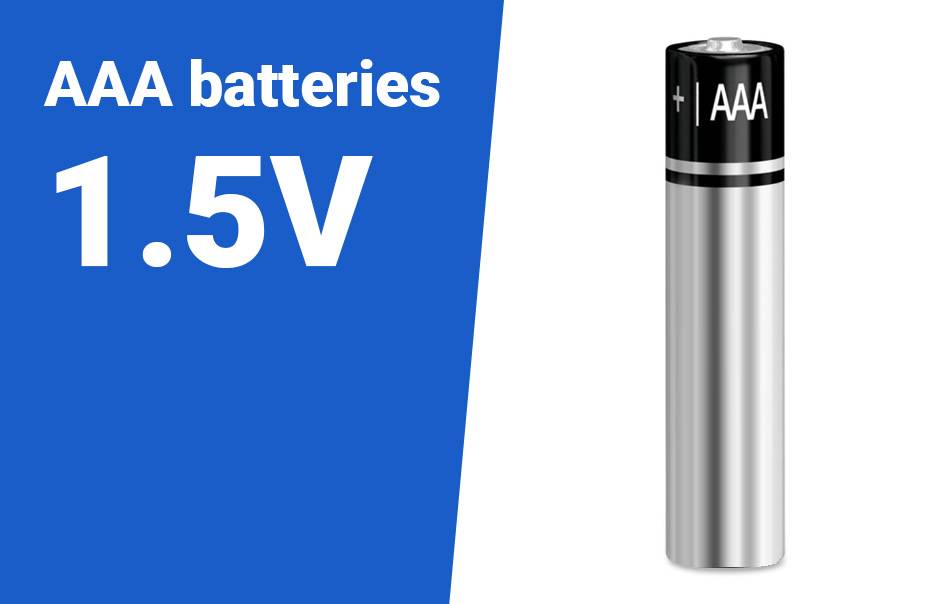
At what voltage is a 1.5V AAA battery dead?
A 1.5V AAA battery is generally considered dead or depleted when its voltage drops below approximately 1.0 to 1.1 volts under load.
Is it OK to use 1.2V batteries instead of 1.5V?
Yes, it is generally okay to use 1.2V rechargeable batteries instead of 1.5V non-rechargeable batteries in devices that can accommodate the lower voltage. However, the performance and runtime may be slightly different due to the lower voltage.
What happens if I replace a 1.2V battery with a 1.5V battery?
Replacing a 1.2V battery with a 1.5V battery may cause the device to operate at a higher voltage than intended, potentially leading to damage or malfunction. It’s essential to use batteries with the correct voltage as specified by the device manufacturer.
Why are rechargeable AAA batteries only 1.2V?
Rechargeable AAA batteries, such as nickel-metal hydride (NiMH) or nickel-cadmium (NiCd) batteries, typically have a lower nominal voltage of 1.2 volts per cell compared to non-rechargeable alkaline batteries. This difference is due to the chemistry and characteristics of rechargeable batteries.
What is the difference between 1.2V and 1.5V AAA batteries?
The main difference between 1.2V and 1.5V AAA batteries is their nominal voltage. Rechargeable AAA batteries are typically 1.2V per cell, while non-rechargeable alkaline AAA batteries are typically 1.5V per cell.
Is a 1.5V battery the same as AAA?
No, the voltage rating (1.5V) refers to the nominal voltage of the battery, while “AAA” refers to the size and form factor of the battery. AAA batteries are available in both 1.5V (non-rechargeable) and 1.2V (rechargeable) versions.
What does it mean that a AAA battery has 1.5V?
The 1.5V rating indicates the nominal voltage of a standard AAA battery, which is the average voltage output under typical operating conditions.
What voltage is too low for a 1.5V battery?
The voltage considered too low for a 1.5V battery depends on the specific application and the manufacturer’s specifications. However, a voltage below approximately 1.0 to 1.1 volts under load is often considered depleted for a standard AAA battery.
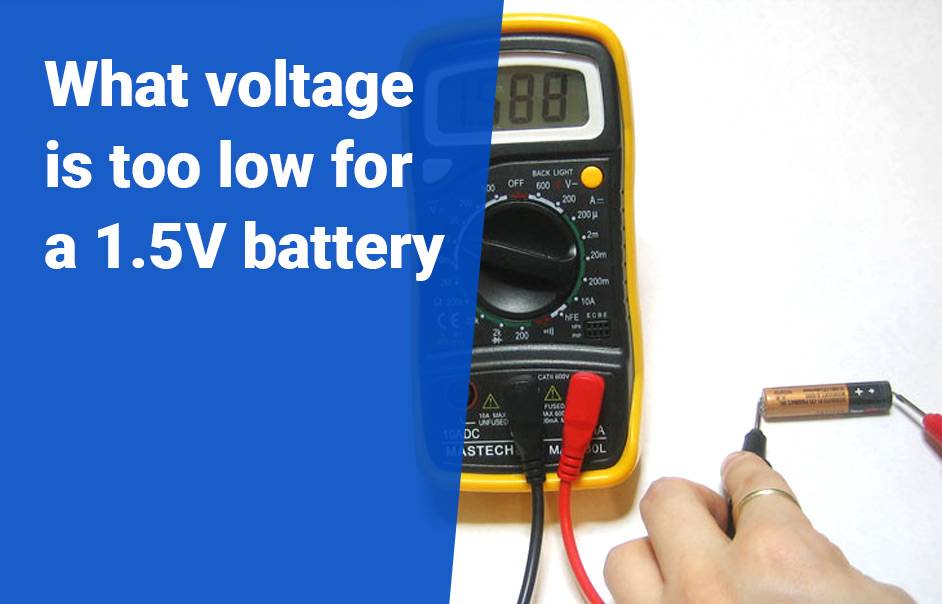
What are 1.2V batteries used for?
1.2V batteries, notably rechargeable NiMH or NiCd types, power various devices like digital cameras, flashlights, and remote controls. The NiMH battery, introduced commercially in 1989, gained popularity in electric hybrid vehicles, constituting 10% of the rechargeable battery market.
Why do AA and AAA batteries have the same voltage? Which is better?
AA and AAA batteries generally have the same voltage (1.5 volts) regardless of size, but AAA batteries may have slightly less capacity. Both can power LEDs, but AA batteries may last longer due to higher capacity. The choice between them depends on device requirements and size constraints.
What type of battery does AAA use?
AAA batteries come in various compositions, including lithium, Ni-MH, and alkaline. Each type offers distinct advantages. For example, lithium AAA batteries boast exceptional longevity, low self-discharge rates, and lightweight design, ideal for portable electronics. Alkaline AAA batteries, with zinc and manganese oxide electrodes, provide reliable power, while Ni-MH AAA batteries offer optimal functioning in high-drain devices.
What voltage in a AAA battery is dead?
A 1.5V AAA battery is typically considered dead when its voltage drops below 1.0 to 1.1 volts under load. For a precise assessment, measure the voltage with a multimeter; if it reads less than 1.3 volts, the battery is considered dead and should be replaced promptly for reliable device performance.
